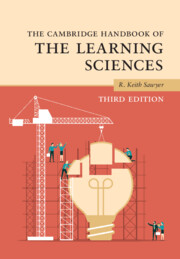Book contents
- The Cambridge Handbook of the Learning Sciences
- The Cambridge Handbook of the Learning Sciences
- Copyright page
- Contents
- Figures
- Tables
- Contributors
- Preface
- 1 An Introduction to the Learning Sciences
- Part I Foundations
- 2 Foundations of the Learning Sciences
- 3 Scaffolding
- 4 Project-Based Learning
- 5 Metacognition and Self-Regulated Learning
- 6 A History of Conceptual Change Research
- 7 Learning in Activity
- 8 Cognitive Apprenticeship
- Part II Methodologies
- Part III Grounding Technology in the Learning Sciences
- Part IV Learning Together
- Part V Learning Disciplinary Knowledge
- Part VI Moving Learning Sciences Research into the Classroom
- Index
- References
6 - A History of Conceptual Change Research
Threads and Fault Lines
from Part I - Foundations
Published online by Cambridge University Press: 14 March 2022
- The Cambridge Handbook of the Learning Sciences
- The Cambridge Handbook of the Learning Sciences
- Copyright page
- Contents
- Figures
- Tables
- Contributors
- Preface
- 1 An Introduction to the Learning Sciences
- Part I Foundations
- 2 Foundations of the Learning Sciences
- 3 Scaffolding
- 4 Project-Based Learning
- 5 Metacognition and Self-Regulated Learning
- 6 A History of Conceptual Change Research
- 7 Learning in Activity
- 8 Cognitive Apprenticeship
- Part II Methodologies
- Part III Grounding Technology in the Learning Sciences
- Part IV Learning Together
- Part V Learning Disciplinary Knowledge
- Part VI Moving Learning Sciences Research into the Classroom
- Index
- References
Summary
Effective learning requires conceptual change: learning new and correct knowledge while also overcoming and transforming previously held incorrect knowledge. These incorrect conceptions prevent deep learning unless they are transformed into correct ones. These early, common-sense, and incorrect beliefs are sometimes called naïve theories. Most of the research in this chapter concerns physics, biology, and math learning. Jean Piaget’s theoretical work provides an important foundation for conceptual change research, as well as theories in the history and philosophy of science about how scientific disciplines change over time. The author presents a knowledge in pieces theory of how conceptual change occurs during learning.
- Type
- Chapter
- Information
- The Cambridge Handbook of the Learning Sciences , pp. 114 - 133Publisher: Cambridge University PressPrint publication year: 2022
References
- 1
- Cited by

